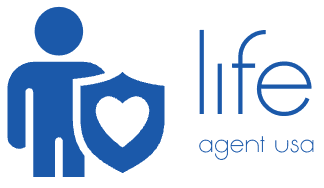Recently, Caprioli et al. 133 extensively reviewed preclinical studies on allosteric modulators of mGluRs on animal models of drug addiction and their potential translational implications. The what is drug addiction results reviewed 133 indicate an remarkable effect of allosteric modulators of presynaptic mGluR2 and possibly mGluR7, supporting the idea that these compounds should be tested as potential medications for addiction treatments. Rehab Centers approaches drug addiction with a comprehensive, patient-centered treatment model that integrates medication-assisted treatment (MAT), behavioral therapy, and individualized recovery planning. Each patient undergoes a full clinical assessment to determine the type of substance used, the severity of dependence, and the presence of co-occurring mental health disorders.
- These include things such as strong cravings, using more than planned, failed attempts to cut back, and continued use despite problems at work, at home, or in relationships.
- Once you’ve been addicted to a drug, you’re at high risk of falling back into a pattern of addiction.
- Fortunately, recovery can happen no matter how long you have struggled with addiction.
- Providers will base a participant’s treatment plan on their unique needs, so not everyone will participate in the same therapies.
- So if something feels off, it’s worth bringing up with your loved one and suggesting they reach out for care.
About 85% of adults living with substance use disorder will relapse within a year of quitting their substance use. If you or someone you care about may have an addiction, talk to your provider right away. Your provider may want to do a physical exam and may request blood and urine tests. These tests give your provider information about your overall health. Addiction can significantly impact your health, relationships and overall quality of life. It’s crucial to seek help as soon as you develop signs of addiction.
What Is Substance Use Disorder? Symptoms and How to Get Help
Find rehab for yourself or a loved one by speaking with a treatment provider. Both PHP and IOP require participants to have a healthy support system and live in a healthy home environment. They must also attend community support groups outside of treatment. Partial hospitalization programs (PHPs) occur in community-based agencies with access to hospital facilities when needed. Participants attend the program five days a week, during the day, for at least five hours daily.
Social media drives diet culture, harms body image, and links to addiction; integrated treatment approaches are necessary.. Many teens play vido games but some develop a gaming disorder, leading them to neglect family, friends, and school. Stunning success in halting Huntington’s disease with gene therapy offers new hope to those with the disorder—and potential advances against Parkinson’s and Alzheimer’s. Since success tends not to occur all at once, any improvements are considered important signs of progress. Increasingly, programs are available to help those who recognize that they have a substance-use problem but are not ready for complete abstinence.
- In a recent paper, projections from the PVT to the NAc were shown to be critical for augmentation of heroin seeking in food-restricted rats 142 (Fig. 1).
- A history of trauma, abuse, or ongoing stress can raise your chances of misusing substances as a way to feel better.
- Success factors such as early intervention, personalized treatment plans, and ongoing support systems also significantly impact recovery outcomes.
- Relapse is common because addiction deeply affects brain circuits related to memory, reward, and stress.
Drug Addiction Treatment & Support
Dependence is related to how the drug interacts with the user’s body, while addiction impacts the user’s decision-making and day-to-day life. Substance use disorder, on the other hand, is the collection of behavioral, mental, emotional, and physiological symptoms that occur when someone continues to use substances despite negative consequences. For many others, quitting can lead to unpleasant withdrawal symptoms, even with behaviors, and can open up uncomfortable feelings that were being soothed or suppressed by the addictive behavior. Because some substances have the potential to cause dangerous withdrawal symptoms, it is important to receive an appropriate diagnosis in order to get the best treatment.
Recognizing unhealthy drug use in family members
Some of these drug-induced modifications at the chromatin level are extremely stable and sustain the drug of abuse-induced long-term behaviours. Among them, histone post-translational modifications (PTMs) are known to be causally involved in drug-induced behaviours 194. PTMs include acetylation (Ac), methylation (Me), phosphorylation (P), ADP ribosylation (PolyADP-R) and dopaminylation (DA), among a growing list of newly discovered modifications 162, 172. For example, while ubiquitylation (Ub) of H2A is known to be a key interactor of H3 methylation 253, its supposed role in drug addiction is still unknown. At this epigenetic level, some drugs were demonstrated to have an influence on drug-induces behaviours such as histone deacetylase (HDAC), bromodomain and DNA methyltransferase inhibitors. Locus-specific epigenome editing is now encouraging as a new field of investigation as it might help to the discovery of new specific and causal drug of abuse targets.
Health On the Net Foundation

People develop a tolerance when they repeatedly misuse substances over time. That means more significant amounts of drugs or alcohol or more frequent involvement in certain behaviors are required to achieve the desired effects, escalating the nature of the addiction. As with other diseases and disorders, the likelihood of developing an addiction differs from person to person, and no single factor determines whether a person will become addicted to drugs.

It’s possible to be dependent on a substance without being addicted. Once diagnosed, the swift involvement of a psychiatrist and dietician is essential. The psychiatrist can help uncover the root causes of the addiction, while the dietitian can help maintain the patient’s overall health. Moderate alcohol consumption is defined as one drink per day for women and up to 2 drinks per day for men. Studies have revealed that this low to moderate alcohol use has been demonstrated to lower Alcoholics Anonymous the risk of coronary artery disease.
What Is drug addiction?
- What defines whether, and in which direction, a specific gene is modified in the context of a global histone PTM is an intriguing and unsolved question 161.
- The common risk factors for drug addiction are genetics, environment, early exposure, mental health disorders, and drug accessibility.
- In this review, we focused mostly on the effects of drugs of abuse on synaptic plasticity and epigenetic modifications.
- If this happens, or if you have been drinking or using drugs, such as opioids—illicit or prescribed, other prescription medications, stimulants, cocaine, or meth—you should seek medical help immediately.
They participate in individual and group therapies to improve recovery skills. Inpatient residential programs are in homes within the community in which sober peers reside. They attend individual and group therapies throughout the day, as well as medication management appointments.
How Addiction Happens in the Brain
History and physical examination of individuals with addiction vary depending on the type of addiction, substance ingested, time since ingestion, and route. For example, most forms of alcohol intoxication present with slurred speech, ataxia, and impaired judgment. Depending on the dose and time frame of ingestion, this process can quickly spiral toward CNS depression, coma, and multiorgan failure. This progression applies to ethanol, methanol, isopropanol, and ethylene glycol. Many people fear the term addiction and believe it is an indication of failure or worthlessness.
How are Drugs Made?
Local programs focus on detoxification, therapy, and peer support to improve success rates. Success factors such as early intervention, personalized treatment plans, and ongoing support systems also significantly impact recovery outcomes. In the U.S., recovery success rates range from 33-50%, according to the National Institute on Drug Abuse, 2021.
Both disrupt the normal, healthy functioning of an organ in the body, both have serious harmful effects, and both are, in many cases, preventable and treatable. These drugs distort perception and cause a sense of detachment from reality. Examples include ketamine (used medically for anesthesia and depression treatment), PCP, and dextromethorphan (DXM) at high doses. Cannabinoids affect mood and cognition by interacting with the brain’s endocannabinoid system. While cannabis has medical uses, frequent use, especially of high-potency strains, can lead to addiction.


